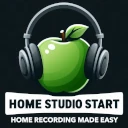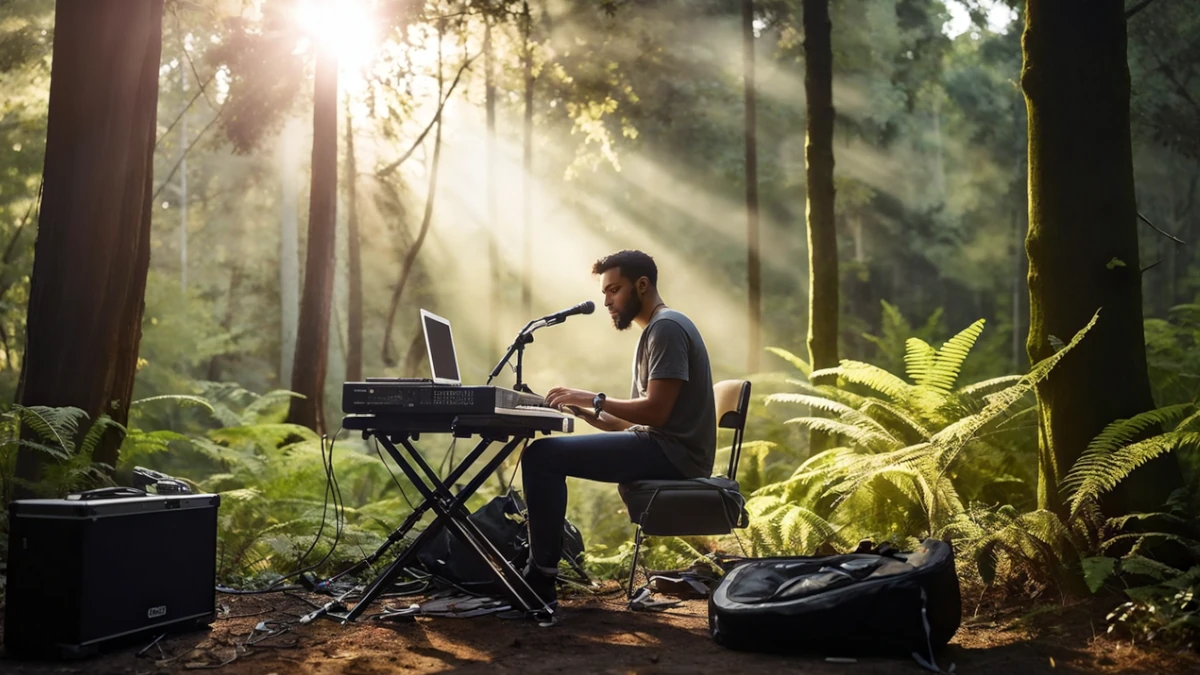Hello, creative minds and music enthusiasts!
Are you ready to unlock the power of creating studio-quality recordings anywhere you go? Whether you’re a musician, podcaster, or producer, a portable recording studio offers the ultimate flexibility and convenience. Imagine capturing inspiration the moment it strikes, recording in diverse locations, and having the freedom to create without limits. In this comprehensive guide, we’ll walk you through everything you need to know to set up your own mobile studio. Get excited because your journey to unparalleled creativity and productivity starts now! Let’s dive in and turn any space into your personal sound haven. 🚀🎤🎧
Why Go Portable? The Benefits of a Mobile Studio
The allure of a portable recording studio lies in its unmatched flexibility and convenience. Whether you’re a traveling musician, a budding podcaster, or someone who simply enjoys the freedom to create anywhere, a mobile studio offers numerous benefits that make it a worthy investment.
Convenience at Your Fingertips
Imagine having the ability to record your music or podcasts anytime, anywhere. With a portable studio, you’re no longer tied to a single location. This freedom means you can capture inspiration whenever it strikes, whether you’re at home, in a hotel room, or even outdoors. No more waiting to book time at a traditional studio or having to lug around heavy equipment. Everything you need is compact and easily transportable.
Cost-Effectiveness
Setting up a portable studio can also be more cost-effective in the long run. Renting professional studio time can be expensive, and those costs add up quickly. By investing in your own portable setup, you eliminate the need for rental fees and gain the freedom to record as often as you like without worrying about the clock. This can be particularly beneficial for independent artists and content creators on a budget.
Creative Freedom
One of the most significant advantages of a portable studio is the creative freedom it affords. You’re not limited by the constraints of a traditional studio environment. Want to record by the beach to capture the sound of the waves in the background? Or perhaps you feel most inspired in a cozy cabin in the woods? With a mobile setup, these creative impulses are easily attainable. This flexibility can lead to more authentic and inspired recordings.
On-the-Go Collaboration
A portable studio also facilitates easier collaboration. Meeting with other artists or collaborators is simpler when you can bring your studio to them. This can lead to more spontaneous and productive sessions, enhancing the creative process. Whether it’s a jam session in a friend’s living room or an impromptu recording in a new city, having a mobile studio makes it all possible.
Adaptability to Different Projects
Lastly, a portable studio is incredibly adaptable. It can be tailored to suit a variety of projects, from music production to podcasting, voice-over work, and more. This versatility ensures that you have the right tools at your disposal, no matter what kind of recording you’re undertaking.
Embracing a portable recording studio setup is about embracing flexibility, cost savings, and creative potential. It’s a practical solution for modern creators who value mobility and spontaneity.
Essential Gear for Your Portable Studio
Creating a portable recording studio requires the right equipment to ensure high-quality recordings and seamless workflow. Here’s a comprehensive list of must-have gear that will set you up for success on the go.
Laptop: The Heart of Your Setup
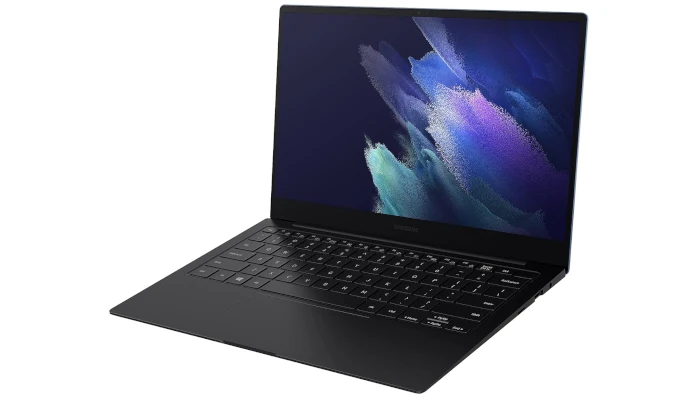
✅ Check Price on Amazon
As an Amazon Associate I earn from qualifying purchases.
Your laptop is the centerpiece of your portable studio. It should be powerful enough to handle digital audio workstation (DAW) software and plugins without lag. Look for a laptop with a fast processor, ample RAM (at least 8GB, ideally 16GB or more), and plenty of storage. Solid-state drives (SSDs) are preferable for faster data access and reliability.
Audio Interface: Connect Your Gear
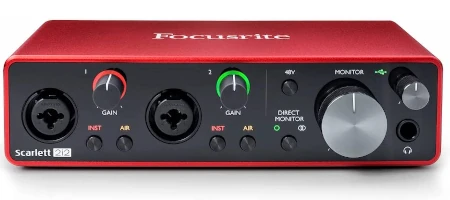
✅ Check Price on Amazon
As an Amazon Associate I earn from qualifying purchases.
An audio interface is crucial for connecting your microphones, instruments, and other audio gear to your laptop. It converts analog signals into digital ones that your DAW can process. When choosing an audio interface, consider the number of inputs and outputs you need. Popular choices include the Focusrite Scarlett series and the Universal Audio Apollo Twin.
Microphones: Capture Every Detail
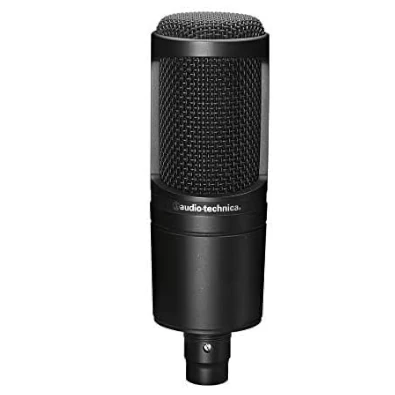
✅ Check Price on Amazon
As an Amazon Associate I earn from qualifying purchases.
A versatile microphone is a cornerstone of any recording setup. For vocals and acoustic instruments, a large-diaphragm condenser microphone like the Audio-Technica AT2020 or the Rode NT1-A is a great choice. Additionally, a dynamic microphone such as the Shure SM58 is perfect for recording in less controlled environments due to its durability and noise rejection capabilities.
Headphones: Accurate Monitoring
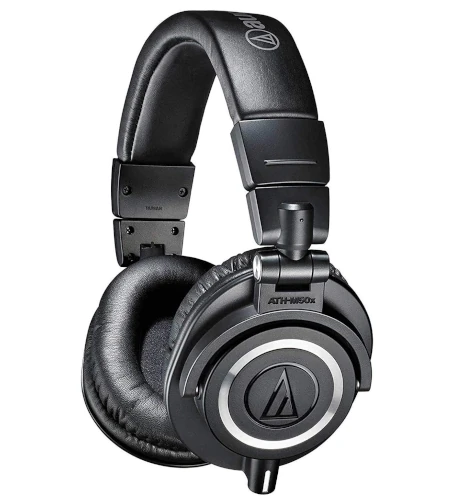
✅ Check Price on Amazon
As an Amazon Associate I earn from qualifying purchases.
Invest in high-quality closed-back headphones for accurate monitoring during recording and mixing. Closed-back designs prevent sound from leaking into the microphone and provide a clear, detailed listening experience. The Audio-Technica ATH-M50x and the Beyerdynamic DT 770 Pro are excellent options for portable setups.
MIDI Controller: Enhance Your Creativity
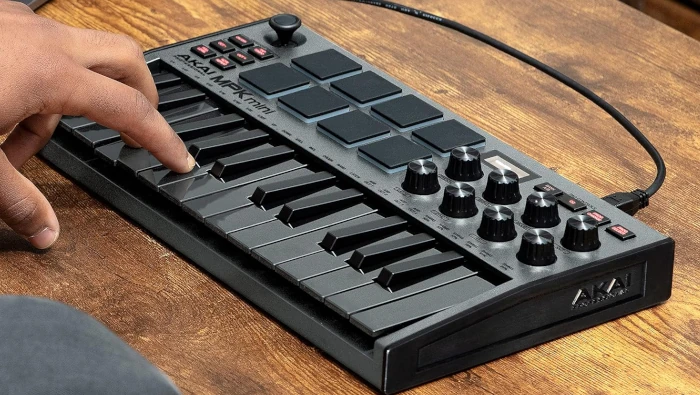
✅ Check Price on Amazon
As an Amazon Associate I earn from qualifying purchases.
A compact MIDI controller can significantly enhance your creative process by allowing you to play virtual instruments and control your DAW. Look for controllers that are portable yet feature-rich, like the Akai MPK Mini or the Novation Launchkey Mini. These devices offer a range of keys, pads, and knobs to expand your creative possibilities.
Portable Acoustic Treatments: Improve Sound Quality
Good acoustics are vital for quality recordings, even on the go. Portable acoustic panels and reflection filters can help control unwanted noise and reflections. Products like the Kaotica Eyeball and the sE Electronics Reflexion Filter are designed to improve the acoustics of any recording space, making them ideal for a mobile setup.
Pop Filter: Clear Vocals
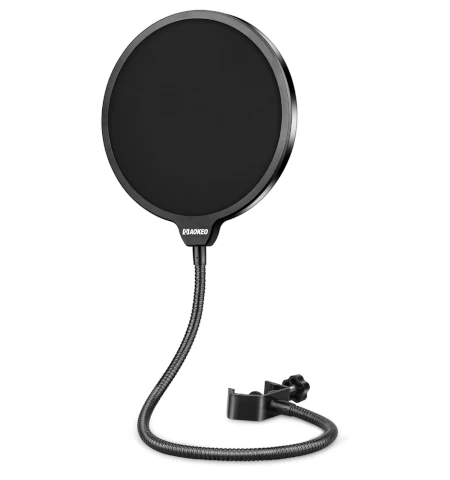
✅ Check Price on Amazon
As an Amazon Associate I earn from qualifying purchases.
A pop filter is an essential accessory for vocal recordings. It reduces plosive sounds (like “p” and “b” noises) that can distort your recordings. Lightweight and easy to attach, a pop filter is a small investment that can make a big difference in vocal clarity.
Portable Stands and Mounts: Stability on the Go
Portable microphone stands and laptop mounts are essential for stability and convenience. Look for collapsible stands that are easy to transport and set up. Brands like K&M and Hercules offer durable and reliable options that are perfect for a mobile studio.
Equipping your portable recording studio with the right gear ensures you’re always ready to capture high-quality audio, no matter where you are. With a powerful laptop, reliable audio interface, versatile microphones, and essential accessories, you’ll have everything you need to bring your creative visions to life on the go.
Optimizing Your Recording Environment
Even when you’re on the go, achieving a great recording environment is essential to ensure high-quality sound. Portable setups come with unique challenges, but with some creativity and the right tools, you can create an optimal recording space anywhere. Here’s how to make the most of your recording environment.
Portable Acoustic Panels: Control Your Sound
Acoustic panels are crucial for controlling reflections and reducing unwanted noise. Portable options like foam panels or collapsible acoustic panels can be easily transported and set up wherever you are. They help absorb sound waves, minimizing echoes and providing a clearer recording. Brands like Auralex and ATS Acoustics offer lightweight and effective solutions that are perfect for mobile use.
Location Scouting: Find Quiet Spaces
Choosing the right location is half the battle when recording on the go. Look for quiet spaces with minimal background noise. Avoid rooms with hard surfaces that cause excessive reflections. If you’re outside, pick a spot away from traffic, wind, and other noise sources. Urban areas might require more acoustic treatment, while rural or secluded spots might naturally provide better acoustics.
Temporary Solutions: Make Any Space Work
Sometimes, you have to make do with what you have. Use blankets, pillows, or mattresses to create makeshift acoustic treatments. Draping blankets over a clothes rack or using pillows to block reflections can significantly improve your recording environment. These DIY solutions are cost-effective and easy to implement in a pinch.
Ambient Noise Reduction: Tools and Techniques
Background noise can be a major issue when recording on the go. Invest in noise reduction software or plugins like iZotope RX to clean up your recordings in post-production. Additionally, using directional microphones can help focus on the sound source and reduce ambient noise. Setting up your recording space away from noisy areas and using barriers like curtains or screens can also help minimize interference.
Proper Mic Placement: Capture the Best Sound
Mic placement plays a crucial role in achieving a good recording. Position your microphone to capture the best sound while minimizing unwanted noise. For vocals, place the mic at mouth level and use a pop filter. For instruments, experiment with different placements to find the sweet spot that captures the most balanced sound. Always ensure your mic is stable and free from vibrations.
Optimizing your recording environment is key to capturing high-quality audio, no matter where you are. By using portable acoustic treatments, choosing quiet locations, and employing creative solutions, you can transform any space into a suitable recording studio. With the right techniques and tools, you’ll ensure your recordings are clear, professional, and ready for production.
Software and Plugins: Building Your Digital Toolbox
Your portable recording studio’s success hinges on the software and plugins you choose. These digital tools can elevate your recordings, offering endless possibilities for creativity and polish. Here’s a guide to building a robust digital toolbox for your mobile setup.
Digital Audio Workstations (DAWs): The Core of Your Studio
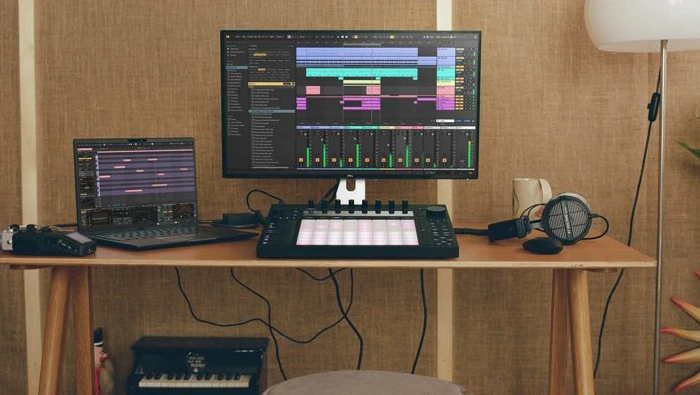
A Digital Audio Workstation (DAW) is the primary software for recording, editing, and producing audio. The right DAW depends on your needs and preferences. Here are a few popular options:
- Ableton Live: Known for its intuitive interface and powerful capabilities, it’s ideal for both recording and live performances.
- Logic Pro: A favorite among Mac users, it offers a comprehensive suite of tools for music production.
- Pro Tools: Widely used in professional studios, it’s known for its high-quality audio processing and extensive features.
- FL Studio: Popular among electronic music producers for its user-friendly interface and robust features.
Essential Plugins: Enhance Your Recordings
Plugins expand the functionality of your DAW, providing tools for sound manipulation and enhancement. Here are some essential types of plugins:
- EQ (Equalization): Adjust the balance of frequency components in your audio. Notable plugins include FabFilter Pro-Q and Waves SSL G-Equalizer.
- Compression: Control the dynamic range of your recordings. Popular options are the Waves CLA-2A and the FabFilter Pro-C.
- Reverb and Delay: Add space and depth to your recordings. ValhallaRoom and EchoBoy are excellent choices.
- Virtual Instruments: Expand your sound palette with software instruments. Native Instruments Kontakt and Spectrasonics Omnisphere are industry standards.
Virtual Instruments: Expand Your Sound Palette
Virtual instruments can simulate anything from grand pianos to full orchestras. These tools are invaluable for mobile setups, providing diverse sounds without needing physical instruments. Some top virtual instruments include:
- Native Instruments Komplete: A comprehensive suite with everything from synths to sampled instruments.
- Spectrasonics Omnisphere: Renowned for its expansive library of sounds and powerful synthesis engine.
- Arturia V Collection: Offers detailed emulations of classic synthesizers and keyboards.
Utility Plugins: Optimize Your Workflow
Utility plugins can streamline your workflow and improve efficiency. Consider adding these to your toolbox:
- iZotope RX: Industry-leading audio repair software for noise reduction and audio restoration.
- Melodyne: Advanced pitch correction and manipulation tool.
- Voxengo Span: A free, high-quality spectrum analyzer for monitoring your audio’s frequency content.
Free and Affordable Options: Quality on a Budget
Not all great plugins come with a hefty price tag. There are many free and affordable options that provide excellent quality:
- TAL-Reverb: A high-quality reverb plugin available for free.
- Spitfire LABS: A collection of free virtual instruments with professional-grade sounds.
- Voxengo OldSkoolVerb: A versatile free reverb plugin.
Choosing the Right Tools: Tailored to Your Needs
Select software and plugins that align with your specific recording needs and style. Experiment with trial versions before committing to a purchase. Focus on building a collection that enhances your creative process and helps you achieve the best possible recordings.
Building a powerful digital toolbox is essential for any portable recording studio. With the right DAW, plugins, and virtual instruments, you can create professional-quality recordings anywhere. Invest in tools that complement your workflow and inspire your creativity, and you’ll be well-equipped to produce outstanding audio on the go.
Tips for Efficient Workflow and Troubleshooting
Maximizing productivity in your portable recording studio requires an efficient workflow and the ability to troubleshoot common issues. Here are essential tips to streamline your process and ensure smooth operation, even when you’re on the move.
Template Projects: Save Time with Pre-Configured Setups
Creating template projects can significantly speed up your workflow. Set up templates for different types of sessions, such as vocals, instruments, or podcasts. Include your preferred track layout, routing, and commonly used plugins. This way, you can jump right into recording without spending time on setup.
Shortcuts and Hotkeys: Speed Up Your Editing
Familiarize yourself with the shortcuts and hotkeys of your DAW. These can drastically reduce the time spent on routine tasks like cutting, copying, pasting, and zooming. Most DAWs allow you to customize shortcuts to fit your workflow. Investing time to learn and personalize these can lead to a more efficient editing process.
Organized File Management: Keep Everything in Order
Maintaining an organized file system is crucial, especially when working on multiple projects. Create a structured folder hierarchy with clear naming conventions for sessions, audio files, and exports. Regularly back up your work to an external drive or cloud storage to prevent data loss.
Efficient Use of Plugins: Quality Over Quantity
While plugins enhance your recordings, using too many can overwhelm your system and complicate your workflow. Focus on a select few high-quality plugins that you know well. Learn to use them effectively rather than cluttering your DAW with numerous options. This approach not only speeds up your process but also helps maintain a stable system.
Monitoring and Mixing: Get It Right from the Start
Good monitoring practices can save you time during the mixing phase. Use reference tracks to compare your recordings and ensure they’re on the right track. Mix as you go to address issues early rather than waiting until the end. This proactive approach results in a cleaner mix and reduces the need for extensive corrections later.
Troubleshooting Common Issues: Quick Fixes
Inevitably, you’ll encounter technical issues. Here are some common problems and quick fixes:
- Latency: If you experience latency, adjust your buffer size settings in the audio preferences of your DAW. Lower the buffer size while recording to reduce delay, and increase it during mixing to handle more plugins.
- Noise and Hum: Ensure all cables and connections are secure. Use balanced cables to reduce interference. If hum persists, check for ground loops and isolate problematic equipment.
- Software Crashes: Keep your software and drivers up to date. Save your work frequently and consider using autosave features. If crashes persist, investigate conflicts with other software or plugins and seek updates or alternatives.
Backup Solutions: Safeguard Your Work
Regular backups are essential to protect your recordings. Use external hard drives, cloud storage, or both to create redundant backups. Automate the backup process using tools like Time Machine for Mac or Windows Backup. Regularly verify your backups to ensure data integrity.
Continuous Learning: Stay Updated
The music production landscape is always evolving. Stay updated with new techniques, tools, and industry trends. Participate in online forums, take courses, and watch tutorials to keep your skills sharp and your workflow efficient.
An efficient workflow and the ability to troubleshoot common issues are vital for a productive portable recording studio. By implementing these tips, you can streamline your process, minimize downtime, and focus on what truly matters: creating great music and content. Invest time in setting up your workflow, stay organized, and continuously learn to ensure your mobile studio operates smoothly wherever you are.
Real-Life Applications: Stories from the Road
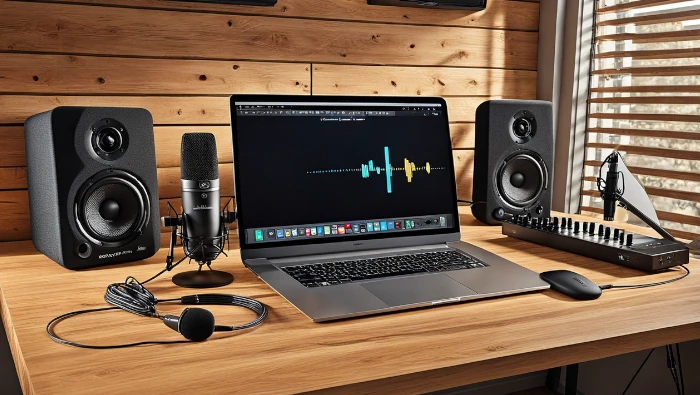
The magic of a portable recording studio lies in its versatility and freedom, enabling creators to capture moments of inspiration wherever they may be. Here are some inspiring stories from artists who have taken their studios on the road, showcasing the endless possibilities and unique projects made possible by mobile setups.
Case Study 1: The Traveling Singer-Songwriter
Meet Sarah, a singer-songwriter who loves to travel. With her portable recording studio, she has recorded tracks in a variety of locations, from bustling city streets to serene mountain cabins. One of her most notable projects was an EP recorded entirely in national parks across the United States. Each track captured the unique ambiance of its location, blending natural sounds with her music. Sarah’s story demonstrates how a portable studio can turn any environment into a creative space, allowing artists to draw inspiration from their surroundings.
Case Study 2: The Digital Nomad Producer
Alex, a music producer, embraced the digital nomad lifestyle, traveling to different countries while working on various projects. His portable studio setup allowed him to produce beats and collaborate with artists remotely. In Bali, he recorded local musicians playing traditional instruments, incorporating these unique sounds into his electronic tracks. Alex’s journey highlights the potential for cross-cultural collaborations and the ability to infuse diverse influences into music through a mobile setup.
Case Study 3: The Podcaster on the Move
Lisa, a podcaster, found that her portable recording studio gave her the flexibility to interview guests in their own environments, leading to more authentic and engaging content. One memorable episode was recorded at a coffee farm in Colombia, where she interviewed the farm’s owner amidst the sounds of nature and coffee production. This immersive experience added a rich layer to her podcast, making her listeners feel as if they were right there with her. Lisa’s story showcases how a mobile studio can enhance the storytelling aspect of podcasts by bringing in real-world elements.
Challenges and Solutions
While the benefits of a portable studio are clear, it’s not without challenges. Here’s how these artists overcame common obstacles:
- Environmental Noise: Recording outdoors or in new environments often introduces unwanted noise. Sarah used portable acoustic panels and reflection filters to minimize interference, ensuring clean recordings even in unpredictable settings.
- Technical Issues: Alex faced occasional technical glitches while on the road. Keeping his software and hardware updated, along with carrying spare cables and accessories, helped him troubleshoot issues swiftly.
- Logistical Hurdles: Traveling with gear can be cumbersome. Lisa invested in lightweight, durable equipment and used a custom-built case to protect her gear during transit.
Creative Outcomes
The freedom to record anywhere has led to unique and creative outcomes for these artists:
- Authentic Sounds: Incorporating natural and environmental sounds has added depth and authenticity to their recordings.
- Increased Productivity: The flexibility to record on the go has led to more spontaneous and frequent sessions, boosting overall productivity.
- Expanded Horizons: Collaborating with local musicians and creators has expanded their musical horizons and introduced fresh, innovative elements to their work.
Real-life applications of portable recording studios highlight the immense potential and creative freedom they offer. From capturing the essence of different locations to facilitating unique collaborations, a mobile setup empowers artists to explore and produce in ways that a traditional studio cannot. Embrace the journey, and let your portable studio take you—and your music—places you’ve never imagined.
Conclusion
Setting up a portable recording studio is a transformative step for any musician, producer, or podcaster. The flexibility, cost-effectiveness, and creative freedom that come with a mobile setup allow you to capture high-quality recordings anywhere inspiration strikes. From selecting essential gear and optimizing your recording environment to building a powerful digital toolbox and streamlining your workflow, each component plays a crucial role in ensuring your portable studio operates smoothly and efficiently.
Real-life stories from artists on the road highlight the endless possibilities and unique projects made possible by embracing a mobile recording setup. By learning from their experiences and implementing practical tips for efficient workflow and troubleshooting, you can avoid common pitfalls and maximize your creative potential.
Whether you’re recording an EP in national parks, producing beats from a tropical beach, or capturing immersive podcast episodes in diverse locations, a portable studio opens up a world of opportunities. It’s about more than just convenience; it’s about pushing the boundaries of where and how you create, fostering innovation, and connecting more deeply with your environment and collaborators.
Ready to take your music or content creation to the next level? Equip yourself with the right tools, optimize your setup, and embark on your creative journey with confidence. Your portable recording studio is not just a setup—it’s a gateway to new horizons, ready to bring your creative visions to life wherever you go.
